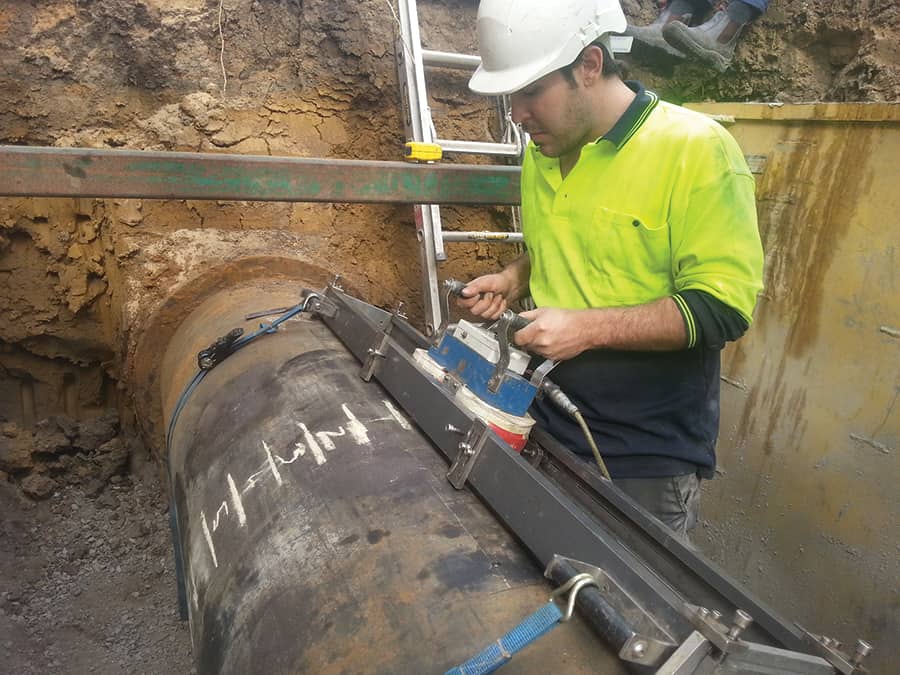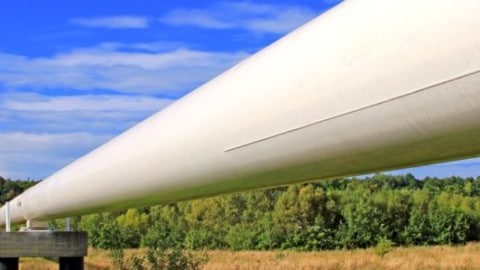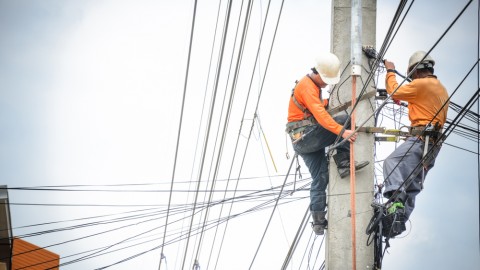by Peter Hadfield, Sydney Water
It is generally recognised worldwide that about 70 per cent of the total asset base of urban water utilities consists of buried pipes. Sydney Water has 21,000 km of water pipes, valued at over $15 billion, and also maintains 1.3 million connections to customer properties. Here, Peter Hadfield takes us through some of the work the utility has undertaken to reduce leaks and breakages across its network.
Most major urban water utilities in Australia have extensive large, critical pressure main systems, parts of which have been in service for up to a century or more. Failure of critical mains has a significant impact on maintaining service levels to customers, loss of firefighting supply, compromised safety, transport disruption and other social costs, as well as significant financial and reputational implications.
In Australia, the total replacement cost of the pipe network has been estimated to exceed $100 billion (Nicholas & Moore, 2009). Over the next five years, the costs of urgently needed asset replacement will be around $5 billion. Maintenance costs over the same period are estimated at some $2.5 billion (WSAA, 2009).
Sydney Water’s cost-effective leak management program
Water mains leak or break for a number of reasons and age is usually not the determining factor. Many things can cause leaks, such as:
- Deteriorating joints and fittings;
- Ground movement cracking pipes;
- Changes in water pressure;
- Changes in rainfall and temperature;
- Adjacent features such as trees and poles;
- Soil types;
- Traffic loads.
Sydney Water has invested $1 billion in the last decade and will invest $350 million over the next four years to reduce leaks and breaks.
Sydney Water’s Infrastructure Leakage Index of 1.5, which according to leakage experts is the best performance indicator for real loss management, puts them in the world’s top 10 per cent for minimising leaks based on the World Bank Institute Guidelines for leak reduction.
Sydney Water implements a number of programs to reduce the likelihood of leaks and the amount of water lost when they happen. These programs include:
Active leak detection and repair
Active leak detection and repair involves acoustically scanning for concealed leaks in buried pipes and repairing pipes identified. Leaks are generally found in connections to the watermains and in fittings such as hydrants and valves. Active leak detection and repair is a continuous process. In 2012-13 Sydney Water spent $2.4 million to inspect more than 13,500 km of pipe for leaks, which is over half the network. Since Sydney Water’s Active Leak Detection Program began almost 165,000 km of pipes have been inspected. It is estimated that this program achieves more than 23 billion litres of water savings a year.
Pressure management
High pressure in pipes can cause them to break and can cause problems with household appliances such as hot water systems. On average, each customer that has their pressure reduced saves an extra 3,900 litres a year. In total, pressure management has the potential to save up to 10 billion litres a year.
Sydney Water also focuses on improved response times to repair leaks and prioritisation of responses based on the volume of water that could be lost, as well as improved flow metering and watermain renewals, targeting poorly performing mains in order to reduce the likelihood of leaks and the amount of water lost when they happen. A balance also needs to be struck between further reducing leaks and the impact this would have on customers’ bills.
Current techniques for condition assessment of critical pipes
Sydney Water has reduced breaks by 50 per cent over the last ten years and currently uses a number of tools to assess the condition of critical pipes.
An indirect soil measurement technique, Linear Polarisation Resistivity (LPR), analyses the corrosive nature of the soil around the buried pipe, the results of which can determine a risk model of pipe condition.
A magnetic flux leakage assessment is used on targeted pipes, where an electric pulse created in a pipe can assess any defects and measure any irregularities which can be an indicator of corrosion.
Award winning risk assessment strategy
In August 2012, the International Water Association (IWA) announced a Global Honour Award to Sydney Water for its Critical Water Mains Strategy and Implementation Project.
A key element of the strategy was the development of a quantitative risk assessment tool that considers both direct and indirect costs of a mains failure. This has enabled the impact to the community to be included in the justification of works. The tool provides a level of sophistication not found elsewhere in the industry in that it assesses the risk quantitatively and prioritises individual mains. The tool is used to introduce a risk-based approach to a number of processes including:
- Identifying and prioritising condition assessment; maintenance programs and renewals;
- Prioritising the development of shutdown operation manuals;
- Developing a process to minimise third party impact on the network.
Research for better failure prediction
With improvements in the methodology currently being utilised across Australia, it has been conservatively estimated that even a 30 per cent improvement in the present state-of-the-art would reduce the high consequence events by 50 per cent and total failure events by 30 per cent, resulting in potential savings of over $160 million over a 20-year period to the Australian water industry. With better prediction from condition assessment, expenditure can be delayed by five years and replacement costs could be reduced up to 20 per cent – meaning the projected savings over a 20-year period would exceed a further $300 million.
Improvements in condition assessment technology will decrease the future risk of substantial funds being potentially misdirected through premature replacement of pipes, which could positively impact future water service pricing. On the other hand, not undertaking timely replacement of pipes could lead to an increasing number and frequency of failures with associated costs and disruption.
International research
An international research project led by Sydney Water commenced in August 2011 and is examining when and why critical water pipes burst.
Six other Australian water authorities – Melbourne Water, Water Corporation, City West Water, South East Water, Hunter Water and SA Water, as well as the Water Research Foundation (US) and UK Water Industry Research are partners in the project. The five-year project is the largest international research collaboration led by Australia on buried water pipes.
The research will develop advanced condition assessment, corrosion modelling and failure prediction techniques to evaluate remaining
pipe life.
Sydney Water has provided a decommissioned 600mm, 1.5km cement lined cast iron pipe laid in 1922 in Strathfield to aid the research project, which is the world’s first research test bed where the interpretation of the condition, failure and corrosion of pipes is being actively researched. The pipe has a nominal wall thickness of 30 mm and lead joints at approximately 3.6 m intervals. The pipeline was made chargeable with potable water and was fitted with entry points for condition assessment.
In addition to its current use, it is expected that the current test bed could be a global facility that can be used to test pipe related research in future, including pipe rehabilitation technologies.
The University of Technology, Sydney (UTS) is managing the research component on improving non-destructive condition assessment data analysis, the University of Newcastle is focusing on modelling pipe corrosion deterioration of large metallic pipes, and Monash University is forecasting likelihood of pipe failure and leading the overall research program.
As part of the condition assessment, improved automatic interpretation process, data collection and analysis is being carried out on the testbed at a number of excavation pits for deployment of external and internal inspection tools. Data generated by the condition assessment technologies during their research inspections of the testbed is advancing the design and implementation of software tools being undertaken by UTS which employ innovative analytical techniques that aim to provide higher levels of confidence in estimating the remaining pipe wall thickness and pitting defects from the sensor readings for a given pipe. Collaborative research agreements have been put in place with some of the most widely used industry partners that provide condition assessment for watermains. There are four condition assessment technology collaborators currently taking part in the research program: Asset Integrity Australia (AIA), Rock Solid Group (RSG), Russell NDE/PICA and Pure Technologies.
An additional research program with PCA Echologics is currently underway, while more emerging technologies are also being engaged to assess their value proposition to the utility partners in forecasting remaining life of large pipes.
The research is focused on real industry needs and active industry participation. This direct engagement to improve the available technology is considered to be the world’s first in a large project of this nature.
Research activities
Asset Integrity Australia
AIA’s inspection is based on the application of an external magnetic field onto a ferromagnetic material and then measuring the response with magnetic sensors. The field, induced by the magnets, is subject to leakage at the corrosion pit, causing a perturbation of its distribution. This magnetic leakage can then be detected by examining the output from the sensors. In condition assessment of water pipes, the AIA technology is used to examine exposed sections of the pipe from the outside.
Rock Solid Group
Also based on an electromagnetic induction phenomenon, the non-contact RSG broadband electro-magnetic technology involves the propagation of electromagnetic fields generated by an AC-excited transmitter. Eddy currents induced in a conducting medium generate a secondary field which travels to the receiver. In water pipe condition assessment, the induced eddy currents migrating in the pipe wall close to a transmitter are influenced by the profile of the ferrous pipe, and their measurement is used to gauge wall thickness. Four research trials by AIA and RSG have taken place at Sydney Water’s test bed over 2012-14, with various pipe sections exposed and subsequently exposed for forensic investigation.
Russell NDE/PICA
The Canadian SeeSnake owned by Russell NDE/PICA is a free-flowing tool which employs remote field technology (RFT) for measuring pipe wall thickness. RFT works by detecting changes in an alternating current electromagnetic field generated by the SeeSnake exciter coil. As the electromagnetic field interacts with the metallic pipe wall, the signal’s magnitude and phase are perturbed at locations where metal loss exists. Research efforts specific to the inherent deployment nature of this tool are also being addressed by looking at the challenge of improving the tool localisation in the pipe during the inspection. The tool was introduced in the testbed at an intrusion pit constructed at one end and retrieved at a retrieval pit constructed one kilometre away. A trial run with a gauge tool was first carried out. Sydney Water maintenance managed the testbed civil work and project managed the two research runs of the tool at the test-bed in 2012.
Pure Technologies
Pure Technologies is bringing to this research run a novel tool, Sahara II PWA, which employs acoustic techniques to measure pipe wall thickness. The tool is inserted in the charged mains and emits acoustic waves that interact with the metallic pipe wall, and the changes in their responses are picked up by microphones in the tool to detect where metal loss exists. UTS is collaborating with Pure Technologies in advancing the interpretation of the signals and this research run is part of that process by collecting research data from a well understood live pipe. The improved tool will have a higher level of confidence with the use of innovative analytical techniques to estimate the remaining pipe wall thickness.
Traffic loading testing
The Sydney Water testbed is also being used to research the pipe stresses and strains generated due to passing heavy traffic and soil loads. This is the first dynamic testing of traffic loadings in the world.
In November 2013, traffic loading tests were performed on site over a bitumen road by two trucks with various axle groups (weighted 22.5t and 38.6t). The tests were performed over the instrumented pipe with 0, 30 and 66.8m internal water pressures, and the truck tests were carried out while the trucks were stopped, passing, braking, cornering, and passing over a simulated speed hump on the road.
Predicted research outcomes
Improved techniques for estimating the probability of failure of critical pipelines and for estimating their remaining life will:
- Decrease the risk of substantial funds being potentially misdirected through premature replacements;
- Reduce replacement costs;
- Delay expenditure on replacements;
- Deliver cost savings which will help sustain lower water pricing, benefiting the community at large;
- Decrease the number and frequency of failures
- Minimise major disruptive events that lead to losses of homes, closures of roads, parklands, shops;
- Minimise the loss of water.
Sydney Water currently has a range of initiatives in place to better predict failures in critical pipes, and assess and manage leaks when they do occur. With continuing research at the various testbed sites, and ongoing improvements to the technologies in place, it has been conservatively estimated that high consequence events could be reduced by 50 per cent and total failure events by 30 per cent, resulting in potential savings of more than $160 million over a 20 year period to the Australian water industry.













